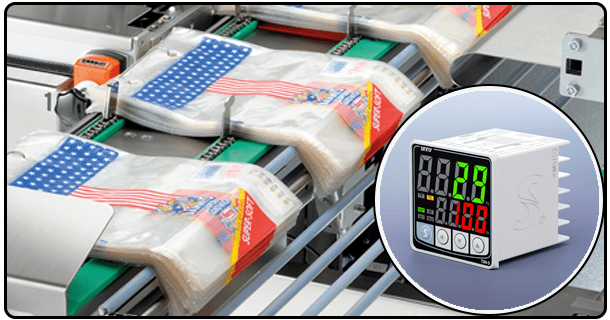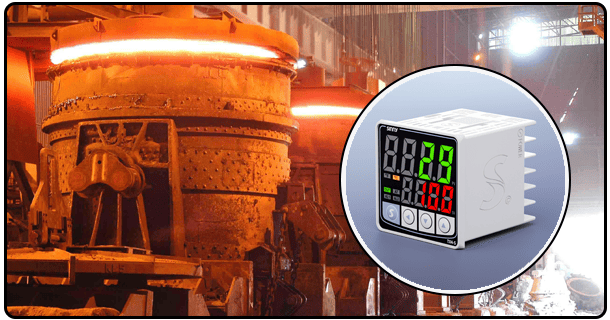Temperature Controller vs Thermostat: What’s the Difference
Discover the critical distinctions between temperature controllers and thermostats to help make an informed choice regarding one or both solutions. Educate yourself about their functions, control mechanisms, sensor compatibility applications, and advanced features costs to make an educated purchase decision.
1. Introduction
Temperature regulation is crucial in many settings ranging from industrial processes to home comfort, making temperature controllers and thermostats two popular devices used for this task. While their functions might appear similar, each is specifically tailored towards fulfilling different purposes and applications - knowing their differences will enable you to select one best suited to your requirements.
2. Definition and Function
Temperature Controller:
A temperature controller is an electronic device designed to maintain an ideal temperature by accepting input from temperature sensors and then controlling heating or cooling elements accordingly. They're widely employed industrially and commercially where precise temperature regulation is essential. For instance, in manufacturing processes, they make sure materials are processed at appropriate temperatures to achieve the desired properties of materials processed through them.
Thermostat:
A thermostat is an electronic device that manages temperatures by switching heating or cooling systems on and off at set intervals to maintain an ideal setpoint temperature. They're widely used residentially and commercially for climate control; for instance, homes may use thermostats to achieve comfortable indoor environments by controlling HVAC systems.

3. Control Mechanisms (HV/LV).
Temperature Controller:
Temperature controllers use various control methods, including On/Off, Proportional, and PID (Proportional-Integral-Derivative) control. On/Off control is the simplest, where the device switches the output fully on or off. Proportional control adjusts the output in proportion to the difference between the setpoint and the actual temperature. PID control combines proportional control with integral and derivative adjustments to provide precise and stable temperature control. These methods allow temperature controllers to maintain tight control over temperature variations, making them suitable for applications requiring high accuracy.
Thermostat:
A thermostat typically utilizes an On/Off control mechanism. If temperatures deviate from their setpoints, thermostats switch heating or cooling systems on or off to restore equilibrium to desired levels. Their simplicity makes thermostats easier to install and use than temperature controllers, but they may lack precision for some uses; for most residential and commercial settings, this level of control suffices.
4. Sensor Compatibility
Temperature Controllers:
Temperature controllers can accommodate sensors, including thermocouples and RTDs (Resistance Temperature Detectors). Thermocouples can be ideal for high-temperature applications thanks to their wide temperature range and fast response time; RTDs offer high accuracy and stability, making them the best option when precise temperature measurements are required. Their compatibility allows temperature controllers to be utilized across various environments, from industrial processes to laboratory settings.
Thermostat:
Most thermostats rely on more straightforward sensors such as bimetallic strips or thermistors as their sensors of choice, often for residential climate control but sometimes for commercial use, too. Bimetallic strips bend with temperature changes to trigger On/Off switches, while thermistors change resistance with temperature to provide signals back to the thermostat. While such sensors generally offer sufficient climate control performance in residential or commercial properties, their responsiveness may differ from that of more sophisticated temperature controllers.
5. Applications and Use Cases (U/As)
Temperature Controllers:
Temperature controllers have many industrial uses, from manufacturing to chemical processing and food production. Precise control over temperatures is necessary in these settings to maintain product quality and process efficiency; chemical processing relies on temperature regulators for reactor control, while food production uses them on ovens or refrigeration units to preserve food safety and ensure quality results.
Thermostat: Thermostats are widely used residentially and commercially to manage heating and cooling systems, maintaining consistent indoor temperatures throughout the building or space. Programmable thermostats allow users to set different temperatures at various points during the day - saving energy while cutting utility costs significantly!
6. Advanced Features Available Now
Temperature Controllers Often Provide Advanced Features, Such As Autotuning, Adaptive Control & Remote Monitoring: Modern temperature controllers often include advanced features like autotuning, adaptive control & remote monitoring to enhance functionality & efficiency for complex & critical applications. Autotuning automatically tunes PID parameters for optimal performance; adaptive control adjusts control parameters in real-time according to process changes, while remote monitoring gives users convenient remote monitoring & control access to their temperature controller. Together these features enhance functionality & efficiency, making temperature controllers suitable for complex and critical applications.
Thermostat:
Modern thermostats boast features like programmable settings and smart home integration, making them desirable options for residential and commercial climate control environments. Programmable thermostats enable users to set schedules for different temperatures throughout the day to save energy; smart thermostats are controlled via smartphone apps integrated with other smart home devices for convenience and energy savings, all making thermostats an attractive option when considering climate control solutions for climate management purposes.
7. Cost and Complexity Solutions for Cost Monitoring Applications (CCTSAs)
Temperature Controllers:
Compared with thermostats, temperature controllers tend to be more costly and complex. Their higher costs justify themselves when used for precision temperature regulation in critical applications like pharmaceutical production; investment in such an advanced controller ensures product quality and efficacy while keeping costs under control.
Thermostat:
Thermostats are typically less expensive and simpler to use than temperature controllers. Their lower cost and ease of installation make them suitable for general temperature regulation in residential and commercial settings. For instance, a basic thermostat can be installed in a home to control the HVAC system, providing a cost-effective solution for maintaining comfortable indoor temperatures.

8. Conclusion
Temperature controllers and thermostats each serve different functions and applications, with temperature controllers offering precise temperature regulation ideal for industrial/commercial environments requiring accuracy; thermostats offer cost-effective regulation that works equally well at residential/general commercial sites; understanding these differences is vital when selecting an ideal device that best meets your requirements for maximum performance and efficiency.
- Top Features to Consider in a Temperature Controller
- Temperature Controller Upgrades: What You Should Know





















